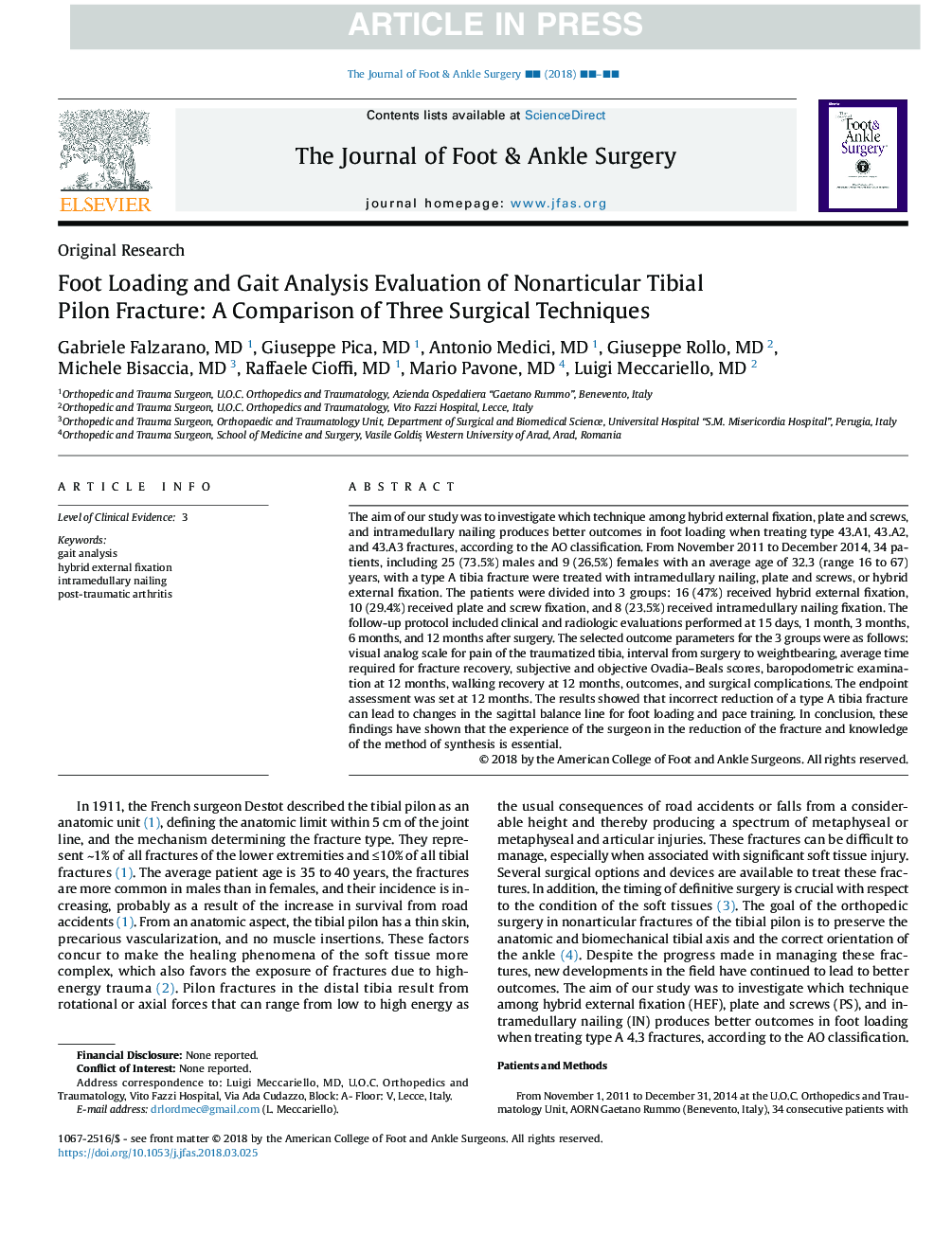| Article ID | Journal | Published Year | Pages | File Type |
|---|---|---|---|---|
| 8950710 | The Journal of Foot and Ankle Surgery | 2018 | 5 Pages |
Abstract
The aim of our study was to investigate which technique among hybrid external fixation, plate and screws, and intramedullary nailing produces better outcomes in foot loading when treating type 43.A1, 43.A2, and 43.A3 fractures, according to the AO classification. From November 2011 to December 2014, 34 patients, including 25 (73.5%) males and 9 (26.5%) females with an average age of 32.3 (range 16 to 67) years, with a type A tibia fracture were treated with intramedullary nailing, plate and screws, or hybrid external fixation. The patients were divided into 3 groups: 16 (47%) received hybrid external fixation, 10 (29.4%) received plate and screw fixation, and 8 (23.5%) received intramedullary nailing fixation. The follow-up protocol included clinical and radiologic evaluations performed at 15 days, 1 month, 3 months, 6 months, and 12 months after surgery. The selected outcome parameters for the 3 groups were as follows: visual analog scale for pain of the traumatized tibia, interval from surgery to weightbearing, average time required for fracture recovery, subjective and objective Ovadia-Beals scores, baropodometric examination at 12 months, walking recovery at 12 months, outcomes, and surgical complications. The endpoint assessment was set at 12 months. The results showed that incorrect reduction of a type A tibia fracture can lead to changes in the sagittal balance line for foot loading and pace training. In conclusion, these findings have shown that the experience of the surgeon in the reduction of the fracture and knowledge of the method of synthesis is essential.
Related Topics
Health Sciences
Medicine and Dentistry
Orthopedics, Sports Medicine and Rehabilitation
Authors
Gabriele MD, Giuseppe MD, Antonio MD, Giuseppe MD, Michele MD, Raffaele MD, Mario MD, Luigi MD,
